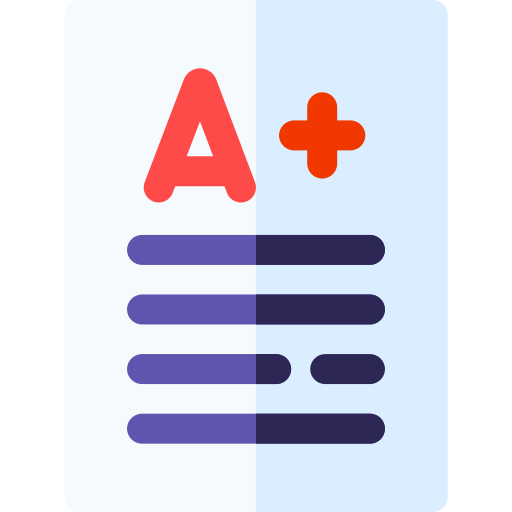دليل المعلم انجليزي ثاني عشر متقدم الفصل الثالث
Bridge to Success
Teacher’s Guide
UNIT 10 LESSON 1 TASKS/ACTIVITIES
? Direct learners’ attention to the new unit them picture and topic. Elicit ideas of what they think they might learn about in this unit-
Then put learners into small groups to discuss starter questions. Tell learners to use the words in the word clouds to help them in their discussions-
Feedback
Elicit answers from class. Write up any key ideas that come out of the feedback discussion up on the board-
Answers: Learners’ own.
Main activity
Listening: Activity 1
Explain to learners that they are going to listen to an interview with a young woman who has started an environmental awareness campaign in her -
neighborhood
Advise learners that at this stage they just need to listen and number the words in the clouds in the order they hear them-
Learners listen and number the words, individually-
CORE
Feedback
Learners write the words on the board in order, or have papers with words printed on them on the classroom word wall and learners reorder-
Answers
- climate change - greenhouse gases - emissions - pollution - non-renewable - energy - fossil fuels - deforestation - waste sustainable
(Differentiation activities (Support*
Learners follow along with the transcript-
(Differentiation activities (Stretch*
Ask learners what Maitha says when she uses certain words and which words she uses together, e.g. greenhouse gas emissions-
Listening: Activity 2
Direct learners’ attention to the Listening Strategy tip box. Explain that learners are not looking for the option in activities 2 and 3 that repeats exactly
what Maitha says in the audio word for word, but the ones which have the same meaning
Give learners time to read and understand the question and the options. Explain-that they will only listen to part of the audio, not the whole audio. Ask learners to think about which one they think may be right before they listen.
Play the audio, learners choose the option they think is correct-
In pairs, learners check their answers.
Answers
(Differentiation activities (Support
Let learners read the transcript as they listen-
(Differentiation activities (Stretch
Maitha mentions all of these points in a way. Have learners explain how she refers to options a and c in the audio and why they are not the correct answer.
Listening: Activity 3
Explain to learners that this is the same type of question as the previous activity-
Give learners a minute to read the question and the options carefully. Explain that they will only listen to part of the audio, not the whole audio. Ask learners to think about which one they think may be right before they listen.
Play the audio, learners choose the option they think is correct-
In pairs, learners check their answers-
CORE
Feedback
Elicit answers from pairs
(Differentiation activities (Support-
Let learners read the transcript as they listen
(Differentiation activities (Stretch-
Maitha mentions all of these points in a way, have learners explain how she refers to options a and b in the audio and why they are not the correct answer
Workbook: Language Tip Box
Direct learners’ attention to the language tip box about language for conveyingcause and effect-
. Go through examples with learners. Ask concept checking questions given, e.g. In which sentence above is the effect given before the cause? [The second sentence]
Learners go through tape script and find other examples. Ask them to determine which ones put the effect before the cause [caused by, as a result of, due to, because of] and which ones put the cause before the effect [results in, leads to, causes]
make sure the feedback sessions are not dominated. by the most confident learners The feedback can. inform whether learning points are reinforced, or. whether the class is ready to move on
Peer Peer assessment develops learners'. metacognition and their ability to articulate rules and The teacher should provide a model of peer assessment at the start of the activity to set out parameters. and to demonstrate constnxtive feedback. Peer assessment can be incorporated in a variety of ways
Combined with oral questioning, peers can assess. whether a learner's answer is correct, and if not, encouraged to provide a correct answer and — ifزrelevant — an explanation of why this is correct
This technique can help learners internalise and deepen their understanding through articulating rules and conventions in their own words
As a differentiated activity, pairing able learners with th0R who need more support. The more able learners can provide support. reinforcing. the strength of their own understanding through articulation and explanation
As an extension to presentations where peers ask questions of the presenters. This can help teachers assess the depth of understanding of both the presenters and the audience. and identify learningزpoints to reinforce as a result
Written work may be peer assessed, providing that learners have a clear marking guide to follow. Activities requiring objective answers (e.g. true/. false, matching. etc. ) can be facilitated quite easily, whereas more open-ended writing tasks may require dictionaries and teacher input to ensure the assessment is successful
Qüzes: Quines provide an objective measure of learners' knowledge, and can be run as activities (eg. backs to the board. see Teaching Strategies), paper-based tasks (e.g. an informal test)
or online (e.g. a multiple -choice test, with instant feedback). Consideration needs to be given to th style of question (free responx. multiple choice. etc.) and the breadth of the domain tested (e.g. whether
the quiz tests a specific language point. the lessons' content, or broader). Regular use of quizzes can help build a data-informed picture of how the class is progressing, and whether there are areas of individual or collective weakness that need to be addressed
teaching or activities whereas individual errors should addressed one- on- one through feedback
Feedback: Regular feedback is a key feature of assessment for learning. and should a part of each activity. An important function of feedback is to ensure learners acquire knowledge and skills correctly and accurately, so each lesson builds on solid foundations Feedback can directly and informally reinforce learning where required (e.g. correcting common svxlling errors, pronunciation issues, grammar misconceptions, etc. during the activity), or irxlude more formally structured teaching of specific points (e.g. addressing a or weakness common to the class)
In addition to the highlighted techniques in the lesson plans, the following strategies can applied to assment for learning in the classrcm
Using objectives and outcomes for nwasurable learning or meeting set criteria. Where learning outcomes are clearly measurable (for example, learners will be able to write a sentence in the Past Simple and the Past Continuous tenses activities that require learners to demonstrate these
outcomes can to assess learners' mastery of the skill or knowledge
Using technology to provide instant feedback. If your class has individual access to digital devices
a range of simple -but -vxwerful tools are available to suprrt monitoring of individual and group understanding. Quizzes can provide a change of pace in the classrcxrn and an element of cornlRtition (to. which learners Often respond well). Instant feedback can then used to inform your teaching; is the class ready to move on, or does a key learning need to reinforcecf? Technology services supporting this
technique include
Kahoot (https://getkahcxt.com/) enables you to create a leaming game that can used in the classroom. Requires individual device access and an Internet connection
NearBd (https.//nearBki.com/) enables you to create an interactive presentation to share with your learners. and collect data. Nearpod can used in the classrcrn. or as homework
Requires individual device access and an Internet wnnection




